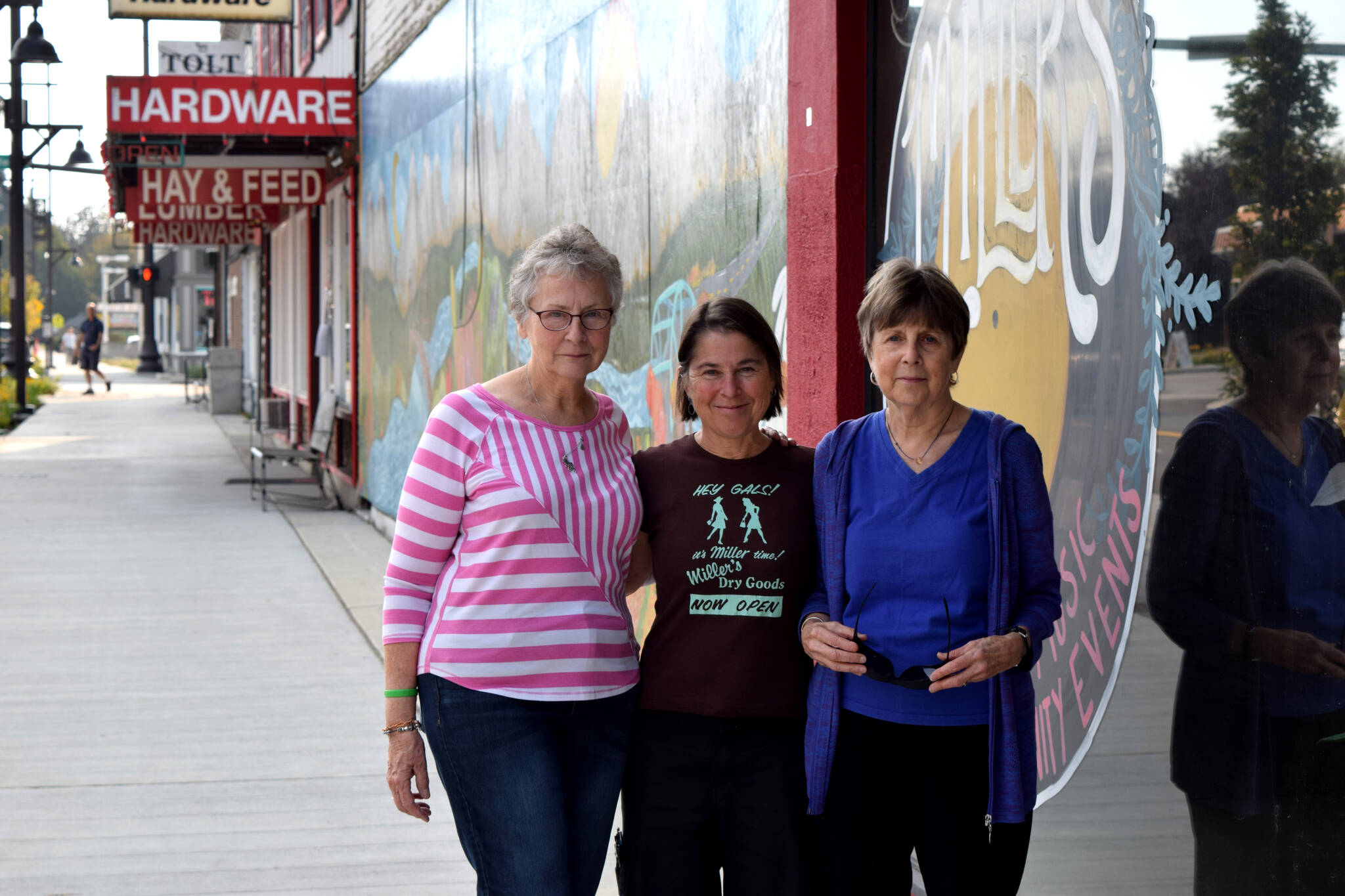As Jules Hughes walks along Tolt Avenue and admires the porcelain tiles that are now a permanent fixture of the newly designed 9-foot-wide sidewalk, it comes with the realization of what she has achieved.
Each of the 15 tiles placed in front of town buildings display a retro photograph of historic Carnation, featuring pictures of Miller’s, the old library and other iconic city landmarks dating back to the early 20th century.
The tiles are one of three artistic improvement projects — including new benches and metal street-light signs attached to light poles — that Hughes and her nonprofit have championed alongside the new Tolt Avenue Improvement Project. Together they are sprucing up four blocks in the heart of town and reinforcing the idea that Carnation doesn’t look like anywhere else.
But for Hughes, it goes beyond just celebrating the history of her small rural town — it’s honoring the devotion of her beloved partner, Lee Grumman, who had dreamed of a project like this for over a decade.
“This project was really important to me personally because I know how good of friends Lee was with so many folks at the historical society and Snoqualmie Tribe,” she said. “It was a longtime goal of mine and Lee’s.”
When Grumman died in 2018, Hughes founded Lee Arts Foundation in her honor, hoping to continue the legacy of a woman who had become a driving force for arts and music in Carnation.
Grumman, who moved to Carnation in 1995, ran Miller’s downtown after purchasing the space from its original owner, Howard Miller, in 2004. With his blessing, Grumman and Hughes converted the former dry goods store — where farmers would buy their overalls and high schoolers their letterman jackets — into a community arts center.
Grumman became a regular main street fixture, Hughes said, with a 2004 newspaper article from the River Current dubbing Miller’s as “Carnation’s Living Room.” Today the space remains a live music venue.
Although the current artistic improvements along Tolt Avenue were drawn up in 2018 and 2019, Hughes had Grumman in mind. Grumman had been theorizing similar projects back in the early 2010s, during her time as a member of the city council, when the Tolt Avenue Improvement Project was in its infancy.
A decade later, paving of Tolt Avenue wrapped up earlier this summer.
“We wanted to keep the local arts alive in her honor and connect people in the Valley, which had always been her goal,” said Hughes, with improvements on Tolt Avenue being among the small and scrappy group’s top priorities.
After developing a group of 30 photos, Hughes worked alongside members of the Tolt Historical Society and the Snoqualmie Tribe to narrow the selection down to 15 photos. Hughes then contacted Chloe Fearing, a graphic designer, and Laura Brodax, a ceramic artist based out of Shoreline, who brought the tiles to life.
Of the 15 photos, the only one in color is a 2019 photo of Snoqualmie Tribal members canoeing near the confluence of the Tolt and Snoqualmie Rivers. It is mirrored by a near identical black and white photo of the Snoqualmies from 1914, which Hughes hopes can reinforce the idea that the Tribe and its connection to the Valley aren’t just in the past.
Walking along Tolt Avenue now, Kris Kirby and Jackie Norris, historical society members who grew up in Carnation, can recall countless stories about the town’s past while looking at tiles, including filling up at the old gas station that’s now a restaurant, or spending time at a since removed soda fountain after football practice.
“It was the event of the summer,” Norris recalled, looking at a 1950 photo of Carnation on the Fourth of July. “You got new clothes and berry picking season was over so you had a little bit of money.”
As Carnation grows and continues to modernize, it’s that palpable connection to its history, rivaled by few other places in the county, that they don’t want to lose. They want to provide newcomers a pathway to the town’s history, while preventing any additional historic buildings from being torn down.
“They can be used to drum up support,” Kirby said of the tiles’ impacts.
For Hughes, the projects are part of what makes Carnation unique. Everyone who owns a building or house in town, she said, always checks what it looks like in historical photos. It is part of the allure of Carnation that her and Grumman both loved.
“Lee and I were very interested in local history. We’ve got that love of nostalgia and understanding the way people lived,” she said. “While other places are trying to look more modern, we’re just trying to look like ourselves.”
Check it out
Lee Arts Foundation will host a community walk to unveil the new tiles and share stories about Carnation’s past. The event leaves from Miller’s at 3:30 p.m. Sunday, Oct. 23.


